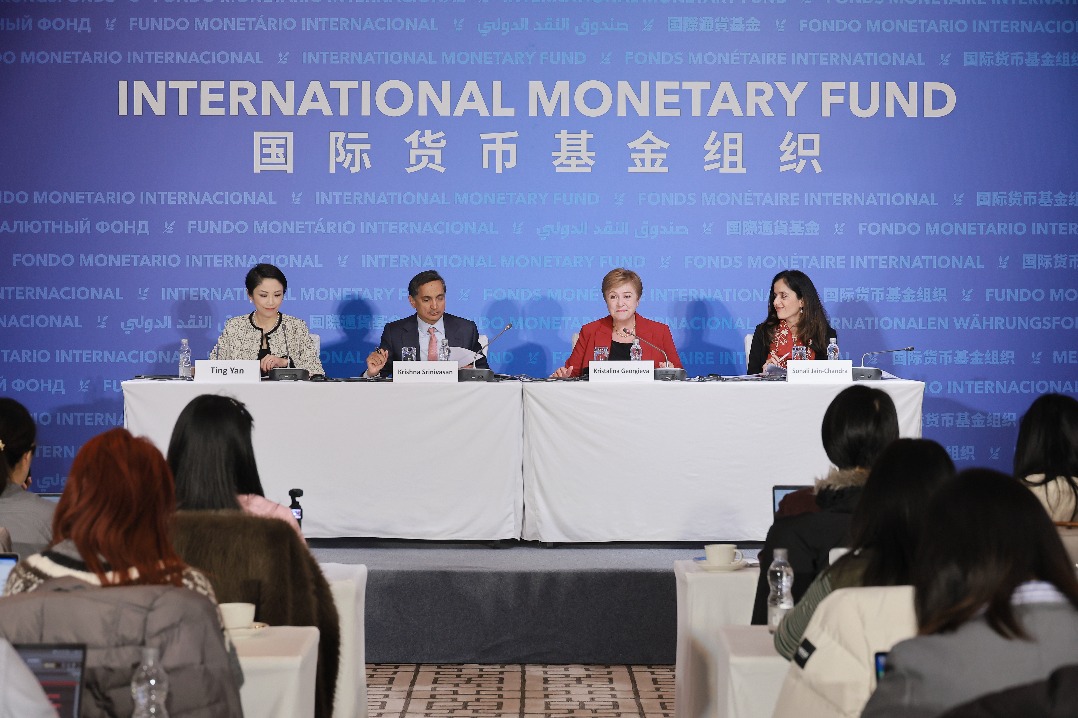With pandemic have come opportunities
China's consumption has shown great flexibility and resilience after it largely contained the outbreak


The novel coronavirus outbreak has been a major test for China's economy and retail industry. In the first quarter, the economy and overall consumption both went down, with retail industry, especially the brick-and-mortar retailers, being greatly affected.
However, China's economy has displayed great flexibility and resilience in a very volatile environment. China's experience in fighting the pandemic has been a barometer for the world. Thanks to China's effective prevention and control measures, as well as the government's efforts to create more jobs and boost consumption, China's economy, after a brief slide, soon began to show signs of recovery.
According to data from the National Bureau of Statistics, the Chinese economy contracted by 6.8 percent in the first quarter of the year but registered 3.2 percent growth in the second quarter. Total retail sales of consumer goods declined by 19 percent year-on-year in the first quarter, and by 3.9 percent in the second quarter, thus narrowing the gap by 15.1 percentage points from the first quarter.
The recovery of China's economy and consumption were also reflected in Nielsen's studies. The latest study shows that business leaders became more confident in May. Asked how the pandemic would impact their businesses, 75 percent of respondents said that they felt optimistic about the second half of the year. Nielsen's fast-moving consumer goods (FMCG) research showed that while the online economy continues to grow strongly, brick-and-mortar retail is also improving significantly. The recovery of traditional offline channels, as an important distribution channel for FMCG, has undoubtedly sent a positive signal to the market.
The market landscape is seeing significant shifts after China largely contained the virus. A recent Nielsen study showed that the pandemic is rapidly revolutionizing Chinese consumers' consumption attitudes, changing their behavior and shopping channels. These new shifts mean new opportunities for the market and many retailers see opportunities arising out of this outbreak which could accelerate the future development of the retail sector. Some retailers have adjusted their business strategies, adapting themselves to the new reality quickly.
For example, the pandemic has made people realize the importance of health, and consumers have become more health-conscious and are willing to buy more health-related products. Intelligent health and technology products have become popular. As a result, retailers are putting more effort into health product placements because they have realized that sales of these products will increase in the future. Moreover, manufacturers are also starting to make conscious efforts to increase the production of related products.
During the pandemic, online retail channels flourished in China. Sectors such as online shopping, online education and online offices have grown rapidly and become the new drivers of consumption growth.
The Nielsen study found that in the first half of the year a highlight of the Chinese economy was the "homebody economy".The report said that during the pandemic, consumers' attention to and discussion about leisure and entertainment, family life, online work, learning and other content increased significantly. Isolation at home made "stay-at-home" a new normal for people.
The rise of the "homebody economy" has given the retail industry a lot of inspiration. More and more retailers are embracing online channels, improving online-to-offline services further and accelerating multichannel integration.
Retailers have a lot to learn from the epidemic, and they have already started formulating their growth and recovery strategies. It is thus important for brands to rework their strategies to win the race in the new era.
The next hot sector in consumption will be 5G technology. Nielsen's latest study finds that Chinese consumers have shown a very positive attitude toward the upcoming 5G era. They believe communications, media and entertainment, online education, telemedicine, smartphone, transportation and retail sectors will all benefit from 5G.
The spillover effects of 5G on the overall economy will bring about unprecedented changes. Its development will continue to extend at the enterprise level and even spread to the whole social system, creating new business models and opportunities beyond our imagination.
5G will be widely used in audio-visual media and games as well as in augmented reality and virtual reality. Take VR/AR as an example. Data show that more than 60 percent of the respondents to the study had some knowledge of AR/VR technology. In terms of age, AR/VR enjoys high recognition among people born in the 1990s and 2000s; in terms of gender, both men and women are willing to try AR/VR technology for virtual shopping.
By analyzing the application and realization of 5G in modes, scenarios, products, experience and services, Nielsen has found that 5G will have a significant impact on scenarios such as personalized demand insight, digitization and virtualization of stores and unmanned logistics. In fact, 5G has become a market factor that cannot be ignored. As 5G technology matures and the costs of construction and application decline, more such scenarios will be explored.
For retailers, they need to consider how to use 5G to realize smart retail, how to expand technological innovation inside and outside the company, and how to accelerate the implementation of various application scenarios.
With the advent of 5G, AR, artificial intelligence, and a shifting market environment, brand owners should be continually embracing change while exploring new business strategies.
The author is the CEO of Nielsen China. The author contributed this article to China Watch, a think tank powered by China Daily. The views do not necessarily reflect those of China Daily.


































